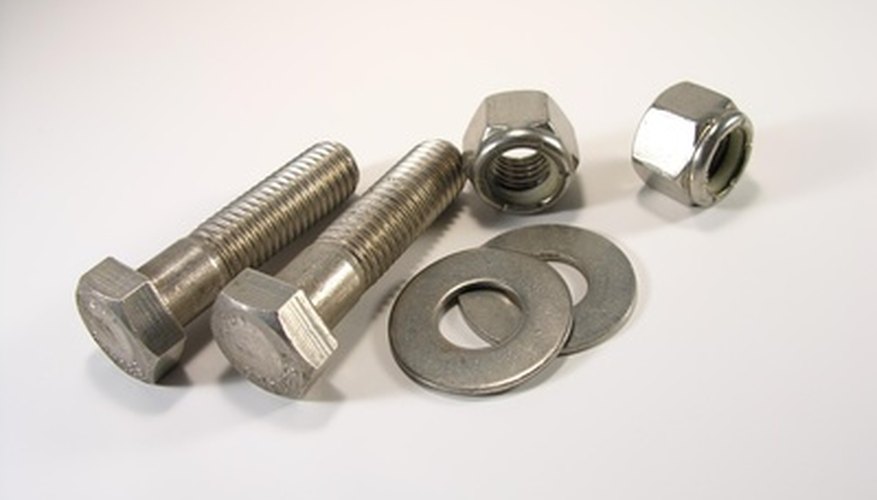The DIN/ISO A2 and DIN/ISO A4 stainless bolts are two common types of stainless steel fasteners that come in different sizes. A2 bolts are also known as ASTM 304 or 18-8, while the A4 is also known as a "marine" bolt or ASTM 316. Due to the non-corrosive nature of stainless steel, both types of fasteners are used for many applications, ranging from the automotive and marine industry to architecture and DIY home improvements.
Metric classes
A2 and A4 bolts come in different metric classes. The bolt type and metric class is usually marked on top of the bolt head, for instance "A2-70." The class depicts the tensile strength of the bolt divided by 10. For example, a bolt marked "A2-70" is a 304 stainless steel bolt with a 700 N/mm2 tensile strength. The most used metric class for the A2 is the A2-70, while with the A4, the A4-80 is most commonly used.
- A2 and A4 bolts come in different metric classes.
- The most used metric class for the A2 is the A2-70, while with the A4, the A4-80 is most commonly used.
Corrosion resistance
The A2 stainless steel grade bolt has a decent corrosion resistance under normal conditions such as wet surroundings, oxidising and organic acids or alkali and salt solutions. The A4, however, is also called an "acid proof" steel grade, as it is more corrosion resistant than the A2. The A4 proves to be resistant in highly corrosive environments such as sea climates and industrial atmospheres with lots of oxidising acids.
Use
A4 graded stainless steel bolts are often used for highly corrosive environments, such as exterior applications, marine conditions, textile manufacture, chemical processing, photographic developing, wine vats, sewerage plants, pumping stations, sugar mills and mining equipment. A2 bolts, on the other hand, are used for buildings, bathrooms, kitchens, food processing equipment, hospital equipment, garden tools, dairy equipment, brewing equipment, motor vehicles, bulk milk coolers and refrigeration equipment, among other uses. A4 bolts are more corrosion resistant because of a higher chromium content. According to volksbolts.com, the downside of a higher content of this element is that it also makes the bolt more brittle and likely to crack. Because of this, the A2-bolt, which is already very resistant against corrosion, is more popular for automotive use than the A4.
- A4 graded stainless steel bolts are often used for highly corrosive environments, such as exterior applications, marine conditions, textile manufacture, chemical processing, photographic developing, wine vats, sewerage plants, pumping stations, sugar mills and mining equipment.
- According to volksbolts.com, the downside of a higher content of this element is that it also makes the bolt more brittle and likely to crack.
Material
Although A2 and A4 are both classified as stainless steel bolts, the content percentages of certain elements greatly differ. A2 stainless steel, also called standard grade stainless steel, typically consists of 8 to 13 percent nickel and 17 to 20 per cent chromium. A4 bolts, on the other hand, are manufactured from stainless steel with 10 to 14 per cent nickel, 16 to 18.5 percent chromium and also include 2 to 3 percent of the element molybdenum. The latter provides extra resistance to chloride corrosion and minimises metallic contamination, making it a very suitable steel for medical and food processing use.
- Although A2 and A4 are both classified as stainless steel bolts, the content percentages of certain elements greatly differ.
- A4 bolts, on the other hand, are manufactured from stainless steel with 10 to 14 per cent nickel, 16 to 18.5 percent chromium and also include 2 to 3 percent of the element molybdenum.
